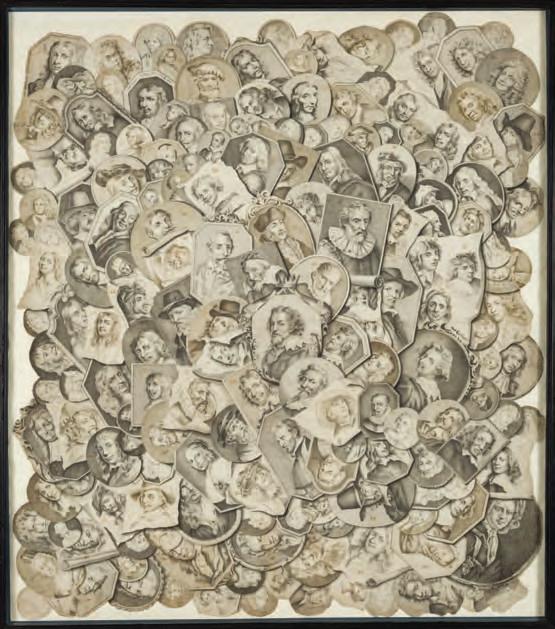
1 minute read
German etching complements arms and armor collection
A16th-century etching of three magnificently dressed foot soldiers complements WAM’s arms and armor and print collections. Purchased by the Museum last fall, Three Swiss(?) Soldiers is by designer, etcher, and wood engraver Daniel Hopfer. The Renaissance artist began his career as a decorator of arms and armor. Hopfer applied this technology to make ornamental designs that he transferred from steel onto paper. These early impressions are credited as the first known etchings. Hopfer’s new technique, which allowed for long sinuous lines, inspired other artists, like Albrecht Dürer.
The weapons and extravagant clothing shown in the print identify the figures as either German foot soldiers (Landsknechte) or Swiss mercenaries (Reisläufer). Simultaneously admired and feared for their discipline, ferocity, dangerousness, and boldness of spirit, Landsknechte and Reisläufer were popular subjects in 16th-century art, and the Hopfer print is an excellent example. The soldiers’ weapons and garments have counterparts in the Museum's Higgins Armory Collection, including the rippled surfaces and broad-toed shoes, which echo the familiar “Maximilan” armors of the period. In addition to offering narrative context to these objects, Three Swiss(?) Soldiers also augments WAM’s encyclopedic works-on-paper collection, given Hopfer’s significance in the history of intaglio printmaking.
18th-century Dutch drawing is more than meets the eye
Alarge trompe l’oeil drawing, depicting more than 170 portraits of Dutch and Flemish painters active between the 15th and the 18th centuries, was purchased by the Museum last fall. Trompe l’oeil, or “trick of the eye,” is a genre of artmaking used in both painting and draftsmanship where the artist creates the illusion of real three-dimensional objects on a two-dimensional surface. Trompe l’oeil dates back to the Renaissance and peaked in popularity in the 18th century. In this untitled and unattributed drawing, the artist copied the portraits of artists found in two 18th-century published surveys of great Dutch and Flemish artists. This trompe l’oeil employs several “tricks.” First is the illusion that the work is comprised of engraved portraits, when in fact they are ink drawings. More impressive, however, is the illusion that the 170 individual “prints” appear to be collaged onto a mount. In fact, the drawing was created using two large sheets of paper. The artist accomplished the collage trick by varying the tones, shading, and shapes of the individual portraits. The appearance of uneven edges on the portraits suggest that a sometimes-clumsy hand cut them from the reference books. This drawing is among a handful of trompe l’oeils in the collection and augments WAM’s holdings of artist portraits, the majority of which were made in the 20th century.










